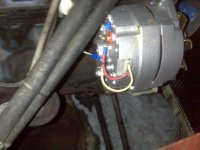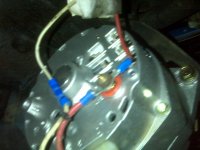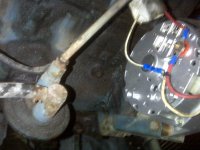Lucihale
New member
Hey! Thanks for peaking. I just replaced my alternator because when tested, my system was pushing out one amp or so less than I need to run with headlights... This lead to me being all out of battery, and stranded with a stalled Jeep in the rain. Thus I was unhappy.
I put the new alternator in with some modifications to the mounts (alter. had one inch foot, mount had a two inch holder. Brass one inch spacer.) Plugged it all in, even disconnected my battery as to not void my warranty, and started her up. All seemed well...
Stopped at the store, it wouldn't start. I checked under the hood, and one of the wires leading to the new alternator was broken. Reattached, jumped and was on my way.
PROBLEM- Now it seems that regardless of the RPMs, or any other electrical draw, my battery wont charge and the Jeep will die if I try to drive anywhere. Turning on the headlights will make my engine stall in a matter of seconds, and my windshield wipers move SO.... SLOW....
I've heard my external voltage regulator may be to blame, but I don't really know much about it.
-'73 CJ5
I put the new alternator in with some modifications to the mounts (alter. had one inch foot, mount had a two inch holder. Brass one inch spacer.) Plugged it all in, even disconnected my battery as to not void my warranty, and started her up. All seemed well...
Stopped at the store, it wouldn't start. I checked under the hood, and one of the wires leading to the new alternator was broken. Reattached, jumped and was on my way.
PROBLEM- Now it seems that regardless of the RPMs, or any other electrical draw, my battery wont charge and the Jeep will die if I try to drive anywhere. Turning on the headlights will make my engine stall in a matter of seconds, and my windshield wipers move SO.... SLOW....
I've heard my external voltage regulator may be to blame, but I don't really know much about it.
-'73 CJ5



